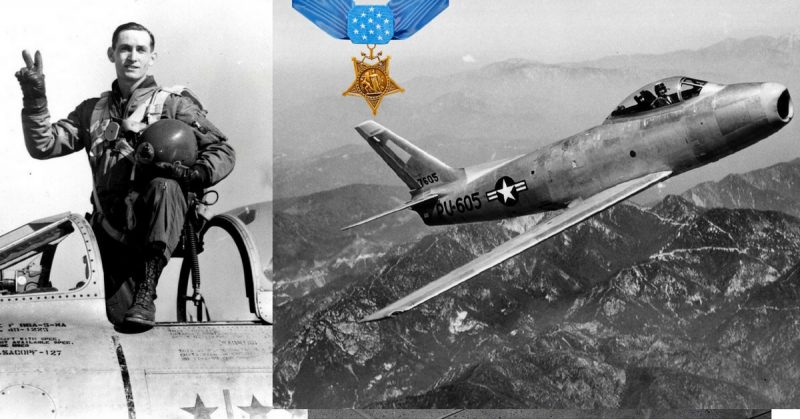In all the airspace in all the world, there was no other place Major George Davis would rather be than “MiG Alley.” Bordering the Yalu river over the Northwest part of North Korea, this slice of the sky would be the scene of numerous dogfights between North Korean MiGs, often piloted by Chinese and Soviet pilots and UN aircraft.
Streaking in from across the Chinese border, these MiGs would wreak havoc on American bombers conducting ground operations requiring a steady supply of pilots willing to brave the airspace in their defense. For World War 2 fighting Ace George Davis, such audacity was nothing new. Downing seven aircraft in the previous war, Davis would add 14 more kills to his count in Korea – including his last.
Taking on 12 Chinese MiG-15s to save a sortie of American bombers, this engagement would send Davis to the ground in a fiery crash. But for his actions, he picked up the nation’s highest military honor for inexplicable gallantry against indomitable odds.
Born to Fly and Born to Fight
George Davis was born on December 1st, 1920, in Dublin, Texas. Always described as a cool and calm character, Davis took this professional demeanor to the United States Army Air Corps in 1942. After the standard tour of training stateside, he eventually found himself with the 342nd Fighter Squadron of the 5th US Air Force. He didn’t drink alcohol or smoke tobacco as was the case many other pilots and this straight-laced future ace would pick up the nickname “Curly” for – as only military humor would – his straight black hair.
Flying the P-47 Thunderbolt out of New Guinea, Davis’ first air to air kill would come on December 31st, 1943 courtesy of a Japanese D3A Val bomber that had just completed a run over allied naval vessels. Over the next year, Davis would continue to gather a reputation as a skilled and aggressive pilot. Contrary to his calm demeanor, when it came time to hit the sky Davis seemed to be another man.
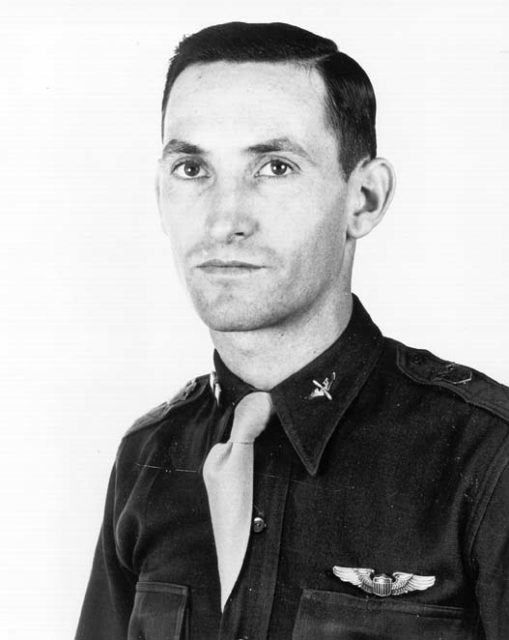
By December of 1944, he had picked up his fifth kill earning him the legendary title of Ace. He picked up two more kills a few days later as his time in combat would soon come to an end. He was sent back stateside to begin training on the P-51 Mustang and by the time he returned to theater most of the aerial combat had ended.
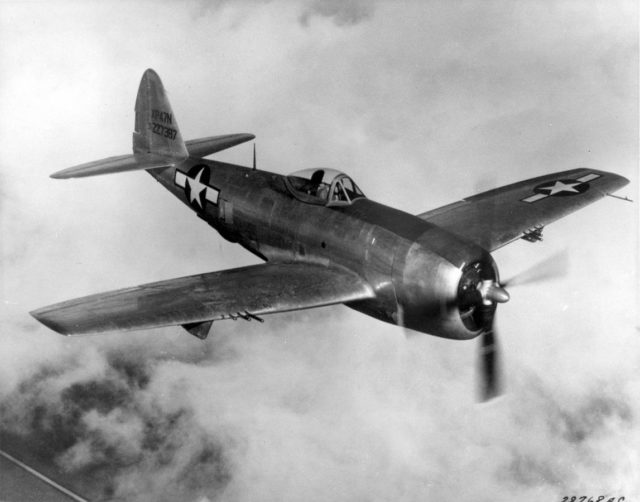
After the war, Davis opted to stay in the Army and eventually the newly formed Air Force. He served in various training commands while making the transition to jet aircraft. For Davis, this meant being trained to fly the F-86 Sabre before being sent to Korea at the outbreak of the war in October of 1951. And true to form, it didn’t take long for Davis to start racking up the kills again.
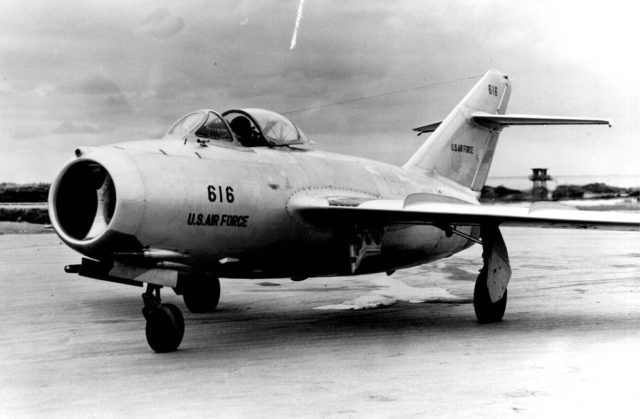
By November 4th, he scored his first victory over a MiG-15. And while the rest of the month was fairly uneventful, on November 30th Davis would pull a “hat-trick” plus one, downing four Chinese aircraft in one engagement. The man who was an Ace with a propeller seemed to have no problem doing so on the back of a jet engine.
Staying in the Fight
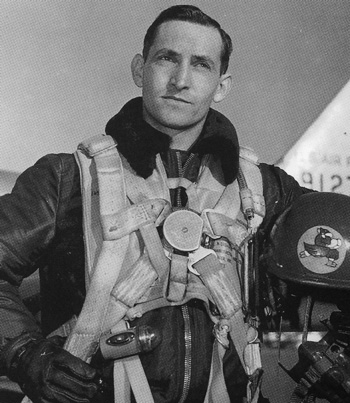
Now an Ace, Davis believed he would be sent home by Christmas per standard policy for Aces in that war. Despite this, Davis still found himself flying combat missions over Korea racking up record after record. The Air Force claimed they had no suitable commander to replace him and his efforts were needed in Korea. However, this stall would prove fatal as on February 10th, 1952 Davis would fly his last mission.
On this particular day, Davis was leading a flight of 4 F-86s on a patrol through the infamous “MiG Alley.” Unfortunately, one of his fellow pilots reported running out of oxygen which forced Davis to order both he and his wingman back to base. Leaving only Davis and his wingman, they continued to search the skies for enemy targets.
It was at that point he noticed a flight of 12 Chinese MiG-15s heading directly in the direction of a group of US F-84 Thunderjets conducting a series of bombing missions. Realizing the threat to the bomber group and recognizing they had the element of surprise, Davis swooped in behind them.
With the first burst of fire, Davis instantly scored a direct hit bringing his kill count in Korea to 13. In mere seconds he veered to the next closest MiG and elevated his count to 14 before the enemy plane could outmaneuver him. Davis and his co-pilot flew through the formation and the aerial acrobatics began in full force.
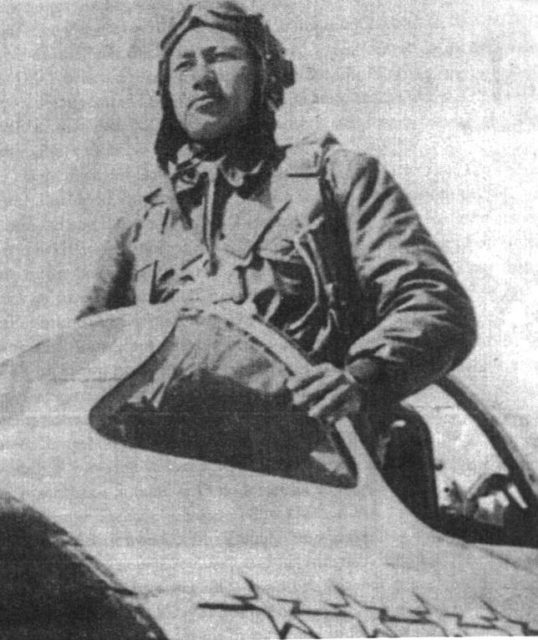
Coming back down for a run on the lead MiG, Davis’ plane then took a direct hit to the fuselage. Perhaps the greatest American pilot of the Korean War was now spinning out of control and spiraling to the ground. His wingman hung around long enough to look for a parachute and defend the falling plane until it crashed.
No parachute was reported and the fighting Ace was now lost.
Aerial searches conducted in the area revealed no signs he had survived and his body was later found still in the cockpit by Chinese troops. His body would never return home. For his actions that day, the man who was now an Ace in two separate wars would posthumously receive the Medal of Honor.
A Little Controversy
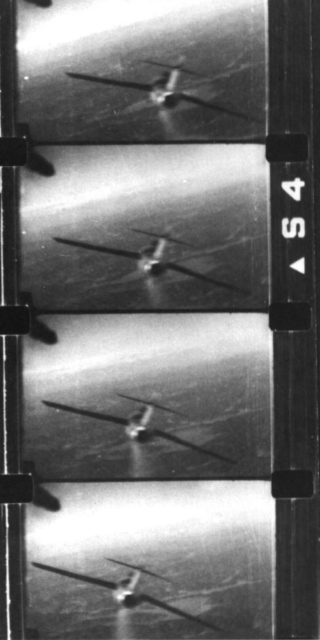
Despite the obvious talent of this fighting Ace, Davis’ Medal of Honor would not come without controversy. Due to the policy at the time to rotate a pilot back home for stateside duty after they had become an Ace, there would be questions surrounding the nature of his death.
Davis was not the only to whom this had happened, but he was perhaps the most high-profile. Davis’ wife and a US Congressman took up the issue in the public arena and may saw the awarding of this Medal of Honor as a PR stunt to quiet the uproar.
However, few could possibly deny Davis’s gallantry and fighting skill which spanned two wars. And few will even know the feeling of flying into a formation of 12 Chinese MiGs ready to do your worst to them without regard for your own life.
When George Davis fell that day over the skies of North Korea, the US lost one of its greatest pilots as he entered into the hallowed halls of posthumous Medal of Honor recipients.
